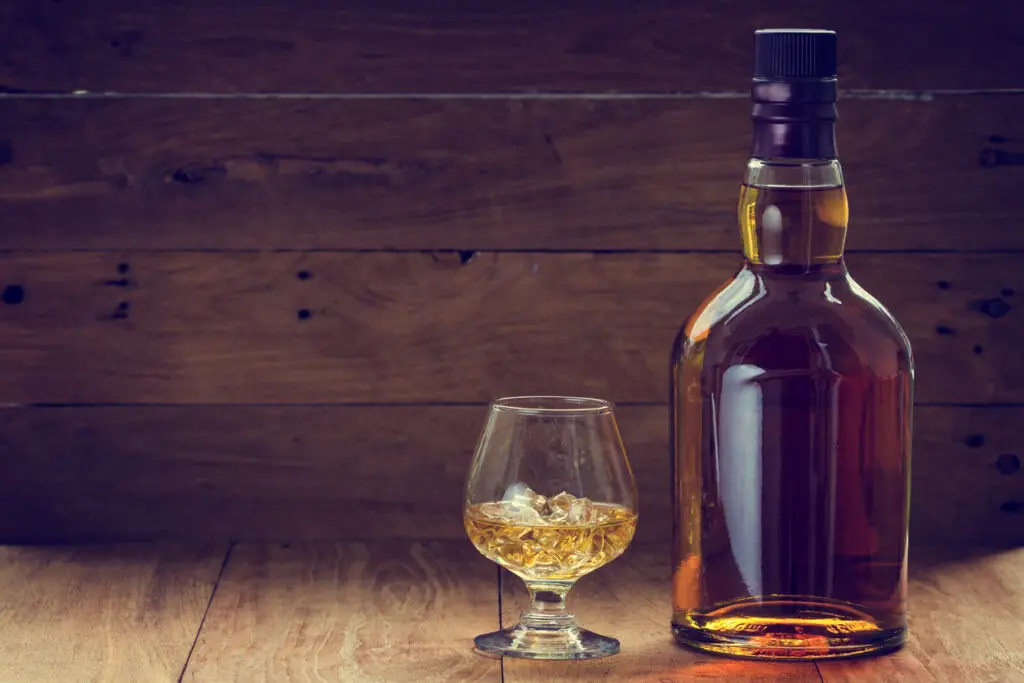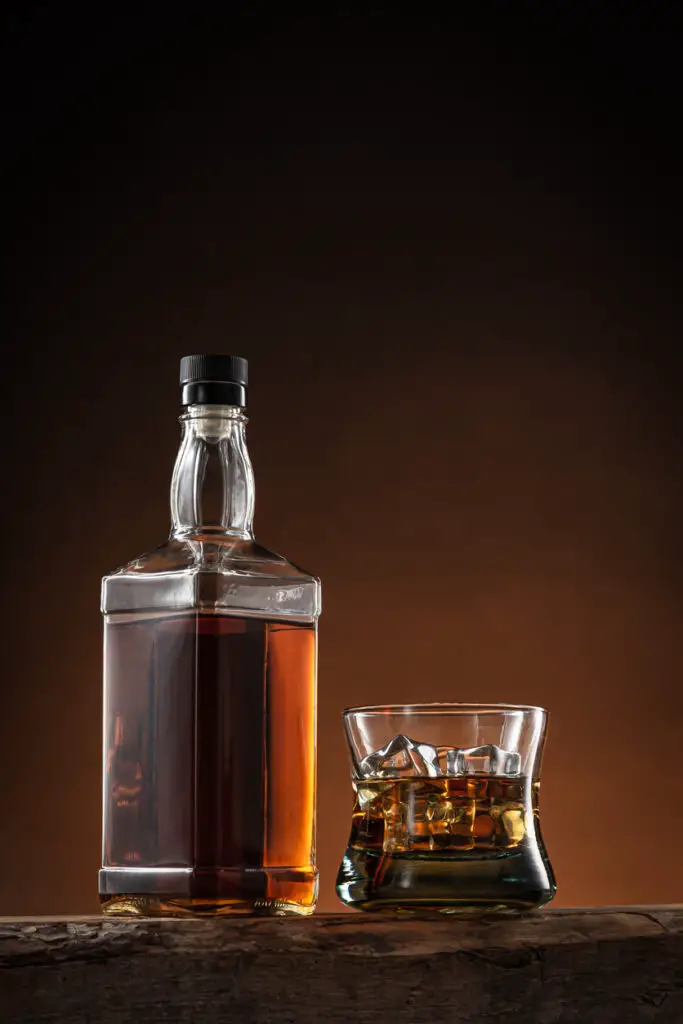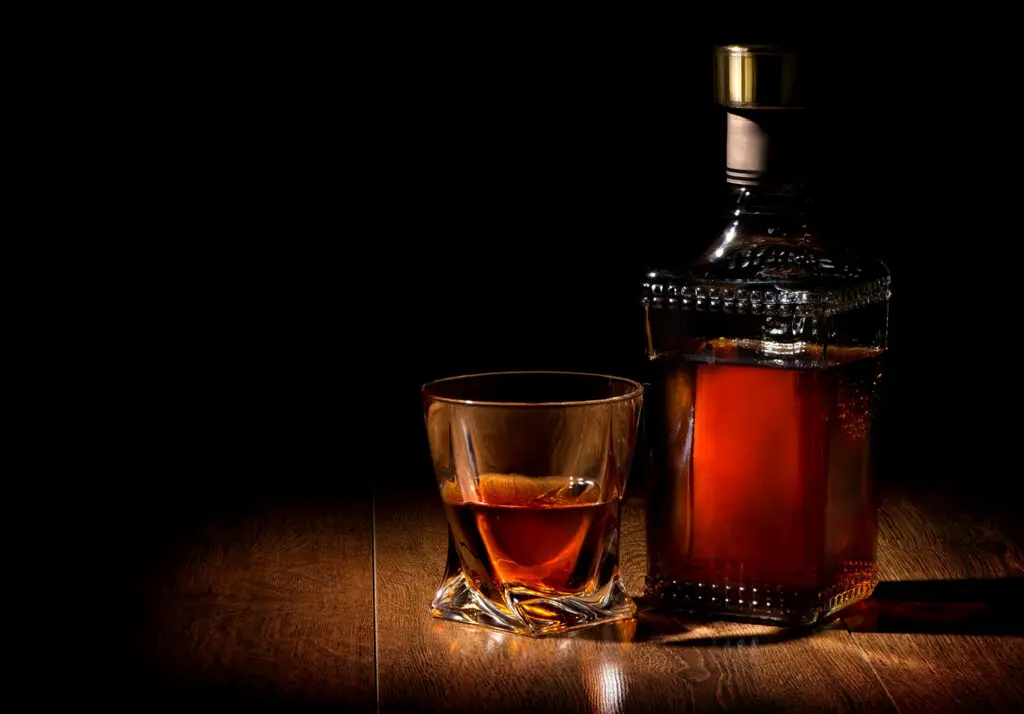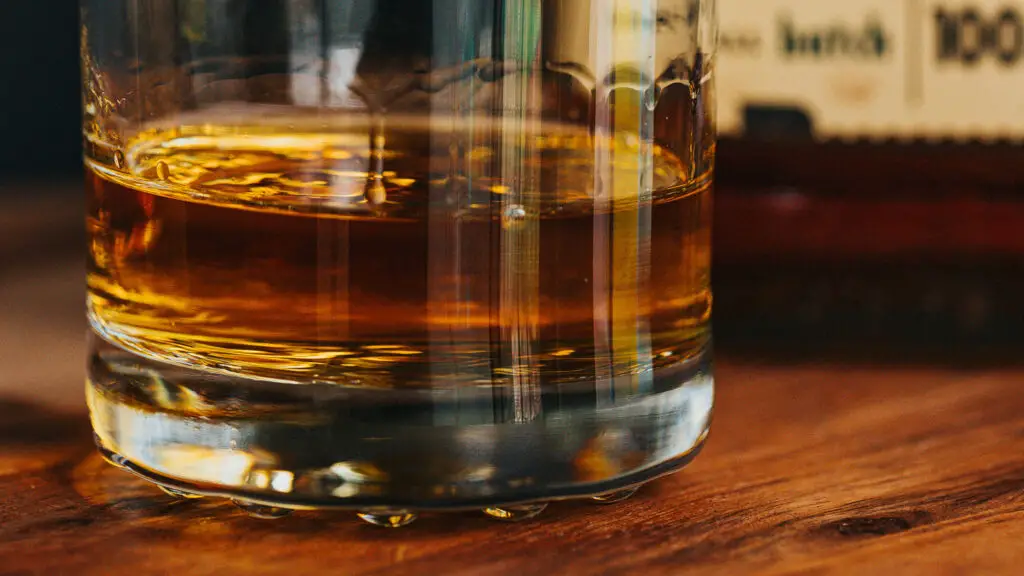Whiskey is sometimes likened to wine as a classy alcoholic beverage. People talk about aged wine and aged whiskey as being the best in their category. Wine continues to age in the bottle so holding it in the wine cellar can help it develop over time. Is it like a fine wine? Does whiskey keep aging in the bottle?
If whiskey is left unopened it will not continue to age in the bottle. The aging process of whiskey is halted as soon as it leaves its barrel. If an unopened bottle is kept away from extreme light and temperatures it will taste the same year after year.
Let us take a look at what whiskey is and what it means for it to age.
What is Whiskey
Before we go into more detail on does whiskey keep aging in the bottle, let’s learn what whiskey is. Whiskey is a dark spirit that is made from distilling different types of fermented grains like barley, wheat, rye, or corn. It is usually aged in wooden casks.
It is made throughout the world. Most notably from Ireland, Scotland, United States, Japan, and Canada.
Author Note: Side tip: The spelling of whiskey and whisky are both correct and are indicative of origin. Typically, Scotland, Canada, and Japan spell it without the “e.” Whereas, spelling whiskey with an “e” is most common in the United States and Ireland.
How Whiskey is Made

Whiskey is made from water yeast and grain. where and what type of whiskey is being made determines the whiskey production methods.
The basic methods are the same. It will undergo the following some or all of the following processes: malting, mashing, fermentation, distillation, maturation, and bottling.
All grain, except barley, is ground and cooked with water to break down the starch. Barely is malted rather than being cooked.
Malting requires that the barley is soaked and saturated with water. Then it is spread out and dosed with water until it begins to sprout. During this time the enzyme amylase is produced that converts the starch into sugar. This process is stopped by heating the barley with hot air.
The next step – mashing – mixes the cooked grain and/or the malted barley with warm water for several hours. This converts the mixture into a sugary liquid, called mash or wort.
The mash is transferred to temperature-controlled open or closed vats for fermentation. Yeast is added to convert the sugar to alcohol for three to four days.
The mixture is then distilled, where it separates through evaporation, and the alcohol is condensed back into a liquid. There are several types of stills used to make whiskey.
The remaining alcohol is aged in wooden barrels where water is added to reduce the alcohol percentage. This brings us to what it means for a whiskey to age.
Aging Whiskey
The aging process, storing the distilled spirit in barrels for a set time, is at the core of its whiskey’s identity. This is where it gets its color, aromas, and flavors.
As whiskey sits in wooden barrels over time it takes on its flavors. Many are aged for 12 years and a few as long as 75 years.
For a spirit in Scotland to legally be called scotch it must be aged in wooden casks for a minimum of three years.
A barrel’s size, type of oak, previous uses, and type of char or toast affect what flavors it will impart. The longer whiskey rests in the barrel the greater its flavor it will take on.
Left for too long in certain types of casks the wood characteristics could overpower the whiskey. This is why older whiskey doesn’t necessarily mean it is better. It depends on what it was aged in.
The most common type of cask is made from charred white oak, often American. Some used toasted casks to impart different flavors. Sometimes distilleries use casks that have been used for other alcohol like sherry.
The different types of wood impart different flavors to the Whiskey. Charring or toasting a barrel releases phenol compounds that offer depth and character to whiskey. This is a key reason behind the answer to does whiskey keep aging in the bottle – since the bottle is made of glass, no more flavors are imparted.
The Difference Between Aging Wine and Whiskey
Wines can change, for better or worse, even after it has been bottled. So, how is whiskey different?
Wine is made from fermented grapes. It has natural, and sometimes added, tannin (from grape skin, seeds, stems, and possibly oak), sugar, yeast, and acid. Chemical processes between these elements continue once bottled. it is accelerated through oxidation by the slightest bit of air that slips through the cork.
Author Note: The main components of whiskey are water and ethyl alcohol. Its flavor is derived during the maturation process from the fermented grain and the wood barrel it is aged in.
After whiskey is distilled and bottled it will not change or age further. It does not have compounds like wine that will continue their chemical interactions.
History of Aging Whiskey

It is said that whiskey production began over 1000 years ago in Scotland and Ireland. Due to the lack of vineyards, monks began fermenting grains. During this time whiskey did not go through barrel aging was consumed shortly after distillation.
Before the 1800s, wooden barrels were the most practical way to store large volumes of food and liquid. They were not seen as part of the whiskey-making process.
When cognac supplies were wiped out in the late 1800s, Spanish sherries took lead as the choice beverage. an excess of empty sherry barrels became apparent and distillers purchased the relatively inexpensive barrels to store their whiskey.
Over time they realized that when they shipped whisky to further locations and the longer the spirit sat in the barrels the better it tasted. The extended barrel exposed whiskey became highly demanded.
Distillers noticed and began to hold whiskey in the barrels to age before releasing it.
It is not clear where charred barrels began. Some claim that it was a result of reusing barrels from food and other products. The barrels were burnt to kill off bacteria and anything rotting that remained.
Types of Whiskey
There are several styles of whiskey determined by where and how it was made.
Single malt whiskey means it was produced with a single malt grain at one distillery. These typically have bold flavors.
Blended whiskey tells you it was made from a blend of previously aged whiskeys from different grains.
Scotch is whisky from Scotland. There are established rules on how it must be made and is most often made with malted barley. These whiskeys usually have a distinctive smokey flavor from the use of peat. Brands include Glenlivet, Macallan, and Johnny Walker.
Irish whiskey is made in Ireland. It is mostly made with malted and unmalted barley grain. It is often aged in bourbon or wine barrels for at least three years. Jameson is one of the most popular brands.
Bourbon can only be made in the United States. It must be aged in new charred oak barrels, be made with at least 51% corn, and bottled at 120 proof or less. Brands include Maker’s Mark and Jim Beam.
Rye whiskey is most produced in Canada or the United States. American rye whiskey that must use 51% rye. This style is often big and spicy.
Tennessee whiskey, like Jack Daniels, for example, is only made in Tennessee. It is required to be filtered through charcoal chips before aging.
Storing Whiskey
Whiskey, like most hard liquors, will go “bad” in a year or two once it is opened. It will not spoil and make you sick, but it will lose its desired flavor and color.
Similar to wine, oxidation occurs when the bottle is opened and exposed to air. The more air contact the faster it will deteriorate.
Unopened sealed whiskey will remain stable and retain the same taste from the day it is bottled to almost indefinitely.
There are environmental factors that can alter the quality of Whiskeys like light, temperature, and air.
If you see color changes or lessening of color, it likely means there are flavor changes as well. This can be a result of extended exposure to excessive light.
When whiskey is exposed to frequent temperature changes it can alter its flavor by a chemical breakdown of desired terpenes.
As we mentioned before, air exposure will lead to oxidation.
Author Note: Always store it tightly sealed away from direct light and at a steady temperature. Keep bottles upright, not on their side. If the cork comes into contact with the alcohol it can degrade or impart undesirable flavors over time.
Serving Whiskey

There is not a “right” way to drink whiskey. Give a few variations a try and see what you prefer.
While there are many fantastic whiskey cocktails, quality whiskey is flavorful enough to stand on its own.
Serving it “on the rocks” is not ideal. lce numbs the palette and dulls the flavor. If you prefer ice, try using one large ice cube or ball. It will melt slower than small cubes.
There are also many stone “ice cube” variations out there for purchase that will protect your whiskey from getting watered down.
Drinking whiskey “neat” means it is served straight in the glass without adding anything. This allows you to experience all its flavors.
If you find this method a bit too harsh, try adding a few drops of water. A splash of water will slightly lower the alcohol sensation and bring out more aromatics and flavor.
Conclusion
Whiskey does not continue to age in the bottle. It is aged by the amount of time it spends in a wooden cask before bottling.
An unopened bottle kept in a steady environment will not change almost indefinitely. Once opened whiskey will begin to oxidize and will last a few years. We hope you enjoyed this article does whiskey keep aging in the bottle.
To living a full-bodied life,
Wesley

